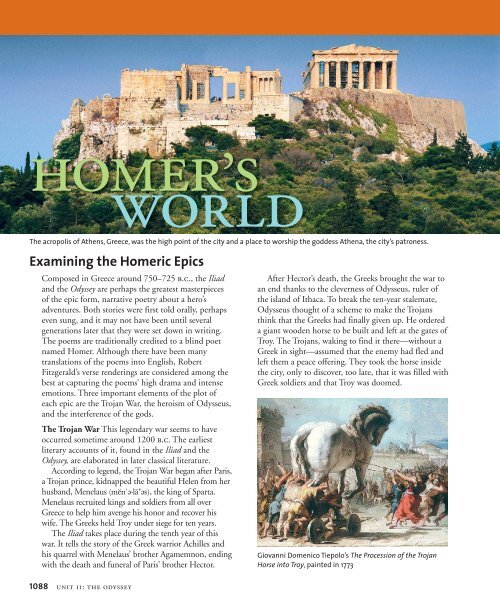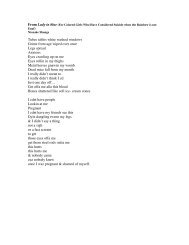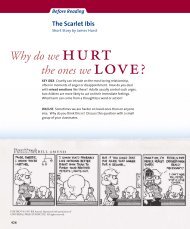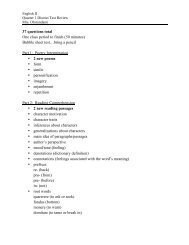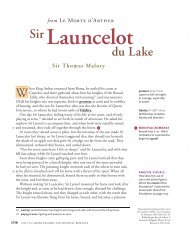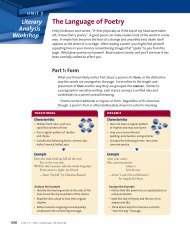Literary Analysis - LanguageArts-NHS
Literary Analysis - LanguageArts-NHS
Literary Analysis - LanguageArts-NHS
You also want an ePaper? Increase the reach of your titles
YUMPU automatically turns print PDFs into web optimized ePapers that Google loves.
homer’sworldThe acropolis of Athens, Greece, was the high point of the city and a place to worship the goddess Athena, the city’s patroness.Examining the Homeric EpicsComposed in Greece around 750–725 b.c., the Iliadand the Odyssey are perhaps the greatest masterpiecesof the epic form, narrative poetry about a hero’sadventures. Both stories were first told orally, perhapseven sung, and it may not have been until severalgenerations later that they were set down in writing.The poems are traditionally credited to a blind poetnamed Homer. Although there have been manytranslations of the poems into English, RobertFitzgerald’s verse renderings are considered among thebest at capturing the poems’ high drama and intenseemotions. Three important elements of the plot ofeach epic are the Trojan War, the heroism of Odysseus,and the interference of the gods.The Trojan War This legendary war seems to haveoccurred sometime around 1200 b.c. The earliestliterary accounts of it, found in the Iliad and theOdyssey, are elaborated in later classical literature.According to legend, the Trojan War began after Paris,a Trojan prince, kidnapped the beautiful Helen from herhusband, Menelaus (mDnQE-lAPEs), the king of Sparta.Menelaus recruited kings and soldiers from all overGreece to help him avenge his honor and recover hiswife. The Greeks held Troy under siege for ten years.The Iliad takes place during the tenth year of thiswar. It tells the story of the Greek warrior Achilles andhis quarrel with Menelaus’ brother Agamemnon, endingwith the death and funeral of Paris’ brother Hector.1088 unit 11: the odysseyAfter Hector’s death, the Greeks brought the war toan end thanks to the cleverness of Odysseus, ruler ofthe island of Ithaca. To break the ten-year stalemate,Odysseus thought of a scheme to make the Trojansthink that the Greeks had finally given up. He ordereda giant wooden horse to be built and left at the gates ofTroy. The Trojans, waking to find it there—without aGreek in sight—assumed that the enemy had fled andleft them a peace offering. They took the horse insidethe city, only to discover, too late, that it was filled withGreek soldiers and that Troy was doomed.Giovanni Domenico Tiepolo’s The Procession of the TrojanHorse into Troy, painted in 1773


